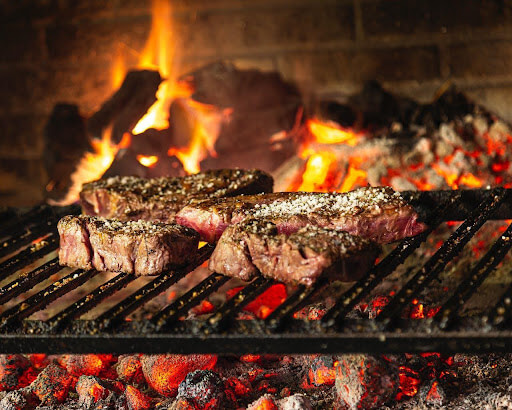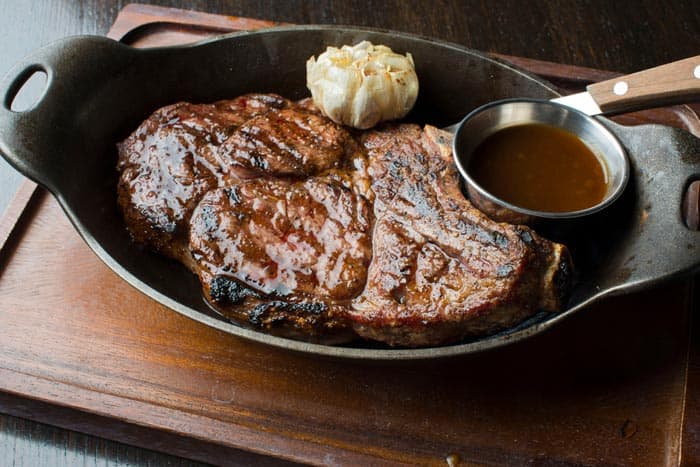When it comes to grilling, few elements contribute more to flavor development than the Maillard reaction. This essential chemical process is behind the rich, savory, and complex flavors that make perfectly grilled meats and vegetables irresistible. In this article, we’ll delve into the science behind the Maillard reaction in grilling, reveal how to enhance it for richer flavors, and offer expert tips to elevate your grilling skills.
Understanding the Maillard Reaction
The Maillard reaction is a chemical process that activates when proteins and sugars in food are exposed to heat, typically above 300°F (150°C). This reaction is responsible for creating the browned crust on grilled meats, the golden hue of toasted bread, and the enticing aroma of roasted coffee. Unlike caramelization, which involves the breakdown of simple sugars, the Maillard reaction is a complex interaction between amino acids and reducing sugars, forming hundreds of flavorful compounds.
The outcome is a deep, savory, and complex flavor profile, often described as meaty or umami. In grilling, the Maillard reaction occurs on the food's surface where direct heat interacts, giving grilled dishes their signature color, aroma, and taste.
How the Maillard Reaction Elevates Grilled Foods
When grilling, the Maillard reaction transforms proteins and sugars into a symphony of new flavors. Steaks, chicken, pork, and vegetables benefit from this reaction as it creates a mouthwatering crust or char on the surface while sealing in juices. The high heat of grilling provides an ideal environment for the Maillard reaction, delivering a delightful contrast between the caramelized outer layer and the tender interior.
Key factors that influence the Maillard reaction in grilling include:
- Temperature: The Maillard reaction activates at high heat, typically above 300°F (150°C). To achieve optimal grilling, the surface temperature of your food must be high enough to promote browning.
- Dry Surface: Moisture hinders browning because water evaporates at 212°F (100°C), keeping the temperature below what’s needed for the Maillard reaction. To boost browning, thoroughly dry the surface of meat or vegetables before grilling.
- Protein and Sugar Content: Foods high in proteins and natural sugars, like meats, poultry, seafood, and certain vegetables (such as onions and bell peppers), are ideal for the Maillard reaction due to their balanced building blocks for flavor compounds.

Techniques to Optimize the Maillard Reaction on the Grill
Mastering the Maillard reaction involves refining your grilling process to maximize browning without overcooking. Here are some techniques to enhance the Maillard reaction:
Preheat the Grill Thoroughly
Allow your grill to heat up fully before cooking. This ensures that the grates reach high temperatures, providing direct contact for a swift Maillard reaction that locks in juices and forms a flavorful crust.Pat Food Dry Before Grilling
Ensure that your food surface is as dry as possible. Use paper towels to pat down meats and vegetables. A drier surface will reach the Maillard reaction threshold more quickly, resulting in pronounced browning.Be Strategic with Marinades
While marinades add flavor, too much liquid can inhibit the Maillard reaction. Marinate food thoroughly, then pat it dry before grilling. Opt for marinades with ingredients like soy sauce or honey, which promote browning, but watch for burning due to high sugar content.Avoid Overcrowding the Grill
Overcrowding can lead to steaming, cooling the grill surface and preventing the Maillard reaction. Leave space between items to allow heat to circulate, ensuring even browning across all items.Sear First, Finish with Indirect Heat
For thicker cuts, sear the exterior at high heat to initiate the Maillard reaction, then move the food to a cooler grill section to finish cooking. This method keeps the interior juicy while developing rich flavors on the surface.Rest the Meat Post-Grilling
Resting meat after grilling allows juices to redistribute, enhancing both flavor and texture. This step ensures each bite is as juicy and flavorful as possible, preserving the texture achieved by the Maillard reaction.

Essential Equipment and Tools to Boost the Maillard Reaction
Using quality grilling tools and equipment also plays a role in achieving the perfect Maillard reaction. High-quality grills that retain and distribute heat evenly are invaluable. Cast iron grates, for example, excel at promoting browning due to superior heat retention compared to stainless steel. A meat thermometer also helps avoid overcooking while allowing the Maillard reaction to fully develop.
Cast Iron Grates
Cast iron grates retain and distribute heat well, leading to improved browning and crust formation. Preheat thoroughly before placing food on them for optimal results.Infrared Burners
Infrared burners deliver intense heat, ideal for quickly searing and activating the Maillard reaction. After searing with infrared burners, move food to a cooler section to finish cooking with indirect heat.Precision Thermometers
Monitoring internal temperatures prevents overcooking while providing enough time for the Maillard reaction to reach its full potential. Instant-read thermometers are especially useful for delicate items like fish or thin cuts of meat.
Distinguishing the Maillard Reaction from Caramelization
Though both are browning processes, the Maillard reaction and caramelization differ in flavor development. The Maillard reaction involves amino acids and reducing sugars, yielding savory, umami flavors. Caramelization, by contrast, is the breakdown of sugars at higher temperatures, resulting in sweet, nutty, and buttery flavors. Foods that undergo the Maillard reaction offer a deeper, more complex flavor than those relying solely on caramelization.

Conclusion: Elevate Your Grilling with the Maillard Reaction
Grilling blends science with technique, and the Maillard reaction is central to the rich flavors of expertly grilled food. By understanding the Maillard reaction’s chemistry and optimizing it through effective grilling techniques, you can elevate the taste and texture of your dishes. Ensure high heat, dry surfaces, and the right tools to maximize browning and flavor. With these principles, you’ll be prepared to achieve exceptional results on the grill, impressing friends and family with each delicious bite.
